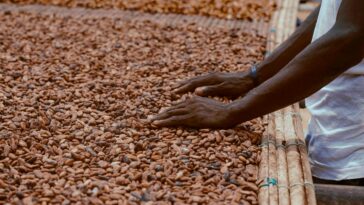The Lucrative Trade and Rising Demand for Nile Perch Maws: A Hidden Treasure in Lake Victoria
Introduction
Nile perch maws, the swim bladders of one of Africa’s largest freshwater fish, have emerged as a highly sought-after commodity in international markets. Despite being relatively unknown to many outside the fishing industry, these specialized organs have become the center of a lucrative trade network spanning from African lakes to Asian dinner tables. With rising demand, particularly from China and Hong Kong, the trade in Nile perch maws has created economic opportunities for fishing communities while also raising sustainability concerns. Additionally, the potential for pond farming presents a promising future for balancing profitability and conservation.
What Are Nile Perch Maws?
The Nile perch (Lates niloticus) is a formidable predatory fish native to African freshwater systems, particularly Lake Victoria, Lake Tanganyika, and the Nile River. These giants can grow up to 2 meters in length and weigh over 200 kg. The maw—the fish’s swim bladder—is a specialized air-filled organ that helps the fish maintain buoyancy in water.
How fish maw is processed in Uganda
When harvested and dried, these maws transform into golden, translucent sacs that resemble oversized dried scallops. Their value lies not just in their culinary applications but also in their perceived health benefits in traditional medicine systems. In Chinese cuisine, fish maw is considered one of the “big four” seafood delicacies alongside abalone, sea cucumber, and shark fin.
The Rising Global Market
The trade in Nile perch maws has seen explosive growth over the past decade. What was once considered a byproduct of fishing has now become, in some cases, more valuable than the fish meat itself. Dried maws can fetch anywhere from $150 to $1,000 per kilogram, depending on size and quality, with the largest specimens commanding premium prices.
China and Hong Kong represent the primary destination markets, where maws are prized ingredients in soups and traditional medicine. The texture of reconstituted maw—gelatinous yet firm with a mild flavor—makes it a perfect addition to celebratory dishes.
Impact on Local Economies
For fishing communities around Lake Victoria in Uganda, Kenya, and Tanzania, the maw trade has created significant economic opportunities. Fishermen who previously struggled to make ends meet can now earn substantial income from a single large Nile perch catch.
Local processing businesses have also emerged, employing people (particularly women) in the meticulous work of cleaning, treating, and drying the maws to international standards. This value addition within source countries has helped retain more of the profit locally rather than exporting raw materials.
Sustainability Concerns
However, the high prices commanded by maws have raised serious sustainability concerns. Overfishing of Nile perch, driven by maw demand, threatens both the species and the broader lake ecosystems. The Nile perch itself is an introduced species in Lake Victoria, where it has dramatically altered the native fish populations since its introduction in the 1950s.
Conservation organizations have begun working with local authorities to implement more sustainable fishing practices, including size restrictions to allow juvenile fish to reach reproductive age before harvest.
The Role of Pond Farming
Traditionally, Nile perch have been caught from wild populations in Lake Victoria, where overfishing has raised concerns about sustainability and environmental impact. However, as demand for both the fish and its byproducts grows, pond farming offers a promising solution to meet market demand while reducing pressure on wild stocks.
Advantages of Pond Farming:
- Consistent Supply: Provides a controlled and predictable supply of Nile perch compared to wild fishing.
- Sustainability: Reduces pressure on wild populations and allows better monitoring of fish health.
- Profitability: Farmers can capitalize on both meat and maw sales, diversifying revenue streams.
- Controlled Breeding: Selective breeding can maximize fish size and swim bladder quality, increasing market value.
The Impact on the local Communities
The communities around Lake Victoria have historically depended on the lake’s resources for their livelihoods. With the increasing global demand for Nile perch maws, these communities stand at a unique crossroads. They can take full advantage of the growing market by engaging in sustainable aquaculture, improving supply chains, and ultimately building a more profitable future.
Strategies for Maximizing Profits:
- Focus on Both Maws and Meat: While the maws fetch premium prices internationally, the meat remains a staple food source in local communities.
- Building Sustainable Nile Perch Farming: Reducing pressure on wild stocks while maintaining high-quality production through controlled pond farming.
- Creating Supply Chains to Asia: Establishing direct export routes, improving packaging, and marketing to premium buyers in China and Hong Kong.
- Continued Local Consumption: Balancing exports with local sales ensures food security and economic stability.
Future Price Projections and Market Dynamics
The price of Nile perch maws has been steadily increasing due to rising demand and limited supply. Industry experts project a 10-15% annual increase in prices by 2030, making this trade even more attractive for investors and local fishers.
However, the success of this industry hinges on sustainable practices. With continued efforts in regulation, pond farming, and international trade development, Nile perch maws can continue to be a source of prosperity for African communities while meeting global demand.
Conclusion: A Path to Prosperity
The growing demand for Nile perch maws presents a unique opportunity for fishing communities around Lake Victoria. By shifting towards sustainable aquaculture, building direct supply chains to Asia, and continuing to support local markets, the Luo and Acholi communities can transform their economic landscape.
Through smart investment, strategic partnerships, and a focus on both local and international markets, these communities have the potential to preserve their environment while capitalizing on one of the most lucrative niches in global aquaculture. The story of Nile perch maws is ultimately one of unexpected value found in what was once discarded—a reminder that sometimes the most precious resources can be hidden in plain sight.
“Purchase premium-quality Nile Perch Maws at ivotia.com. We collaborate directly with experienced fishermen across Lake Victoria to ensure fresh, sustainably sourced fish maws.”



